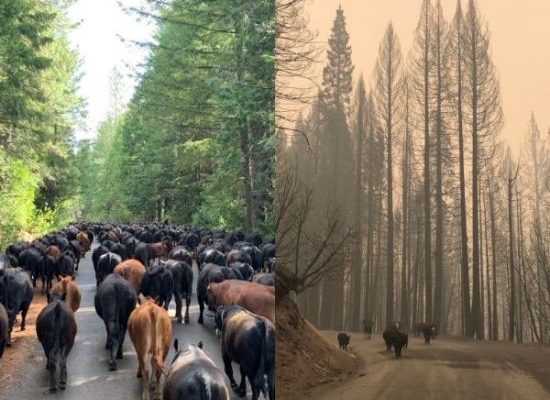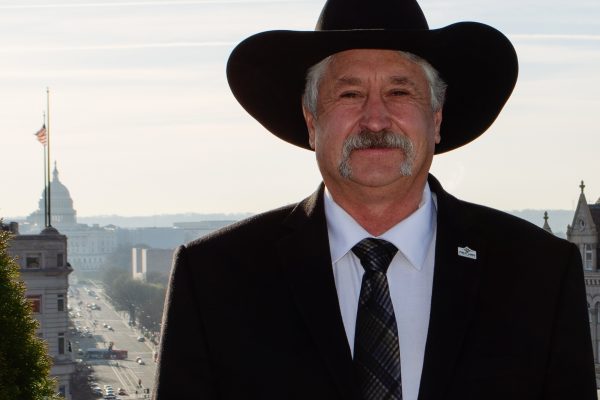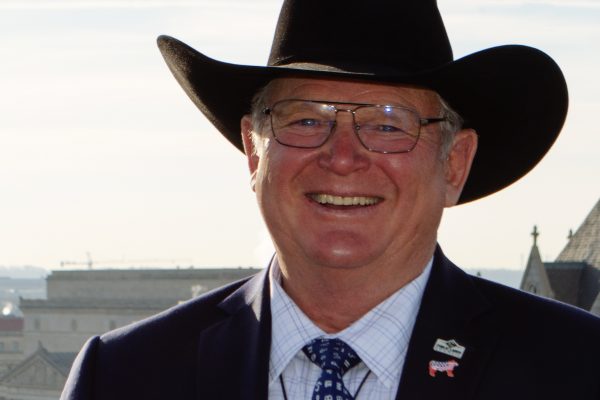By Theodora Dowling
Special to Western Livestock Journal, Jan. 1, 2015
“Science should guide good decision making, but it can’t replace it.”
Brenda Richards recalled these words of Rob Gordon of the Heritage Foundation, spoken at a 2010 Public Lands Council (PLC) meeting. Federal land managers in the West would be wise to heed Gordon’s advice, says Richards, an Idaho cattle rancher who is now President of PLC. In a recent interview with WLJ, she revealed how basing federal land management decisions solely on scientific studies can have negative unintended consequences long into the future.
“Science is a wonderful tool. As producers, we need it to help us make decisions that will sustain the resources, our businesses, and our families for generations,” Richards told WLJ.
“But we must remember that protecting private property rights—the lifeblood of every rancher’s economic viability—should also be at the foundation of every decision.”
Studies are often misused or “cherry-picked” by special interest groups, Richards told us—particularly on federal lands, where the decision-making process includes opportunity for public comment and litigation.
For example, she said anti-grazing groups are using a recently-published sage-grouse study to forward their agenda. That study says that sage-grouse nests are most successful where grass is a minimum of seven inches high—in certain cases. The anti-grazing groups have ignored that “in certain cases” bit and are calling for a 7-inch grass height requirement across the bird’s 165 million acre range. This would mean death to grazing in most areas. According to the press release for Center for Biological Diversity, Western Watersheds Project, and WildEarth Guardians, that’s not such a bad thing.
“The more grass cows eat, the fewer sage-grouse survive on public lands,” reads the press release. “The livestock industry no longer has any defense that cows on public lands do not hurt sage-grouse.”
Meanwhile, the actual authors of the study are pushing back against the anti-grazing activists’ use of their work. Dave Naugle, the study’s principal investigator, said the groups are “twisting the facts to further an agenda.”
The lead author, Kevin Doherty, said the study was conducted in eastern Montana and northeast Wyoming, the wettest and most grass-dominated part of the sage-grouse’s range. Contrary to the anti-grazing groups’ claims, Doherty said the study’s findings should not be applied in drier regions, such as the Great
Basin. Furthermore, the study clarifies, grass height hardly plays a role in nest success when there’s adequate cover from sagebrush or other shrubs.
Grazing is just one of many factors influencing grass height, added Jeff Beck, one of the study’s co-authors. Other factors, such as precipitation, soils and temperature, are major factors.
“For instance, an early, wet spring in 2003 resulted in the highest nest success observed in the five-year study,” Beck said. Apparently, sage-grouse do well in wet years—along with about every other species in the West. Water brings life.
“We’re not too surprised that these groups have mishandled this sage-grouse piece the way they have,” said PLC’s Brenda Richards. “They’ve got a long history of combing through studies to get the result they want: removal of livestock.”
She said that the cherrypicking of science isn’t the only problem plaguing federal lands. Inadequate science is also sometimes used to influence management decisions. Not all science is created equal, Richards pointed out: Special interest groups, universities and agencies can sometimes have desired “predetermined” outcomes before the research even begins. Funding competition, agendas and other influences can drive outcomes.
But there are ways to improve the quality of the scientific literature used in a decision, Richards said. For example, the collaborative land management group she chairs in southwestern Idaho includes a science review process. The Owyhee Initiative Agreement, which oversees federal land management in her area, requires that all parties of the group—ranchers, local governments, “environmentalists”—sign off on every study before they may be used in decisions.
But, Richards added, even the best scientific research is not adequate as the sole basis for a decision.
“The world is far too complex for any biologist or range scientist to be able to consider all variables. So much else plays into it— ranch-level economics being a major factor,” Richards said. “If the land management agency makes a ‘science-based decision’ to remove half my cattle from my federal range because it’s sage-grouse nesting season, I may not be able to stay in business. Losing ranching would be a major blow to the grouse.”
Where would a 7-inch grass height requirement get us, if applied across the West? Richards cited peer-reviewed research showing that leaving seven inches un-grazed means losing abundant insects and the fresh new growth of grasses and forbs upon which sage grouse thrive. Leaving seven inches means leaving fuel for wildfire. Leaving seven inches means taking away ranchers, who provide water sources on arid ranges where wildlife otherwise couldn’t exist. Leaving seven inches means replacing ranches with subdivisions, farms or other developments less friendly to sage-grouse.
“We have data showing that the declines of sage-grouse populations directly correlate to declines in livestock numbers on the range over the last half-century,” Richards told us. “When you look at the big picture, sage-grouse need ranching. This narrow, single-species focus on ‘seven inches of grass’ will only harm the grouse.”
Richards cited an example of how single-species management has failed in the past: the federal government’s handling of spotted owl habitat in the Pacific Northwest. At one time, the government seemed to believe that shutting down logging in order to protect the owl was the right decision. The science said so. But, as Richards pointed out, science evolves.
“By the time the federal agencies and some ‘environmental’ groups figured out that the owls and other species needed those logging communities to manage the overgrown forests, it was too late,” Richards said.
“It will take generations to reestablish communities with the knowledge, ability and desire to start managing those forests again. In the same sense, if we don’t protect grazing rights, we can’t expect to keep our ranching communities around to manage the millions of acres and valuable natural resources our country relies on.”
If not just science, then what else should land management decisions be based on? Protection of property rights, Richards told WLJ. She said historically, societies that protect property rights have benefited from the healthiest environments, where humans and wildlife have thrived together.
“There is a causal relationship there,” Richards told us. “We take care of the things we own and can pass down to our children. When you own something, you benefit from the fruits of your labor and care.” When everybody owns something, she added, a “tragedy of the commons” scenario results. Resources are wasted or abused, because nobody whose livelihood depends upon them is caring for them.
The science says sage-grouse need cover for nesting. But the science also says livestock need grass. With every management decision, there is an unavoidable judgment call. How can we know what to do? Gather the best science we can, Richards says, and put the principle of private property rights at the basis of every decision. — Theodora Dowling, WLJ Correspondent




